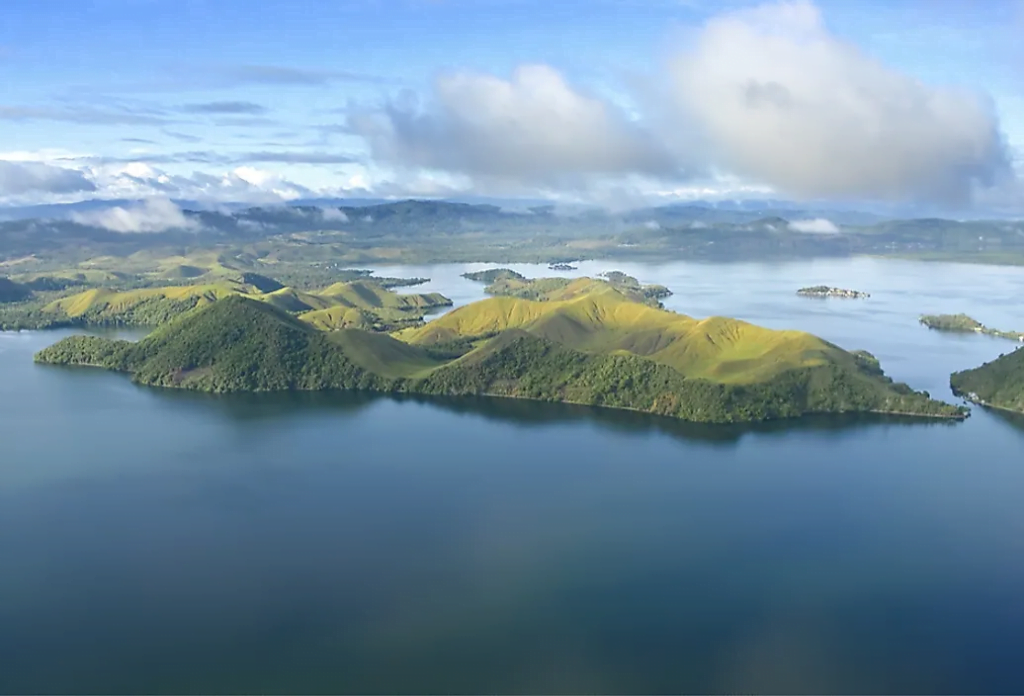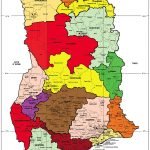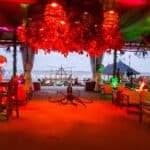Reviewed by Soliu.
Some of the Largest Islands in the World are Greenland, New Guinea, Borneo, Madagascar, Baffin Island, Sumatra, Honshu, Victoria Island, Great Britain, and Ellesmere Island. The highest tropical mountain, the biggest cave system, and the biggest butterfly are all in New Guinea.

The world is adorned with a vast array of islands, each possessing its own unique charm and significance.
Among these geological wonders, some stand out not only for their sheer size but also for their rich cultural heritage, diverse ecosystems, and pivotal roles in shaping the course of history.
Of course, there are a lot of big islands in the world, and many of them are countries. Technically, Australia is an island because it is not linked to any other place, but most people think of it as a continent. At 2,969,976 square miles or 7,692,202 square kilometers, Australia is mapped as the smallest of the seven continents. But if you count it as an island, it is the biggest one in the world.
In this exploration of the largest islands on our planet, we embark on a journey to uncover the natural beauty and human stories that have shaped these extraordinary landmasses into the captivating destinations they are today.
From the pristine wilderness of Greenland to the tropical paradise of New Guinea, join us in discovering the largest islands in the world and the remarkable tales they have to tell.
Top 10 Largest Islands in the World
Here are the ten largest islands in the world that are not Australia, based on how much land they cover
1. Greenland

Greenland is in first place on the list of the largest islands in the world, with an area cover of 2,166,086 square kilometers (836,330 square miles).
Greenland is the biggest island in the world. It is between the North American mainland and Iceland in the North Atlantic Ocean. Greenland is a part of Denmark that is independent from the rest of the country. It has its government and parliament. The island is mainly covered in ice and snow, and about 56,000 people live there.
Northeast Greenland National Park, the biggest national park in the world, is in Greenland. There are many different kinds of animals in the park, such as polar bears, musk oxen, and walruses.
The Greenland Ice Sheet, which is the second biggest ice sheet in the world, is also in Greenland. The thick ice sheet covers more than 80% of the island and is more than 2 miles thick.
The Hiawatha hole is the largest asteroid impact hole in the world. It is in Greenland. The hole is more than 19 miles wide and has been there for about 500 million years.
2. New Guinea

New Guinea With an area of 785,753 square kilometers (303,416 square miles). New Guinea has a record of being second on the list of the largest islands in the world. It is in the southwest part of the Pacific Ocean, north of Australia. Politically, Indonesia and Papua New Guinea both have a part of New Guinea. There are many different cultures and languages on the island, as well as many different kinds of plants and animals.
Mount Wilhelm is the tallest jungle mountain in the world, and it is in the country of New Guinea. Over 14,000 feet high, the mountain is home to many unique plants and animals.
The Frasassi Caves, which are in New Guinea, are the world’s biggest cave system. The cave system is more than 12 miles long and has many impressive stalactites and stalagmites.
The Queen Alexandra’s birdwing butterfly, which is the biggest butterfly in the world, lives in New Guinea. The butterfly lives in the jungles of New Guinea. Its wings can be up to 11 inches long.
3. Borneo

Borneo is the world’s third-largest island, covering 748,168 square kilometers (289,254 square miles). It is between the Malay Peninsula and Sumatra in the southeastern Atlantic Ocean. Borneo is part of Indonesia, Malaysia, and Brunei from a government point of view. Some of the unique animals that live on the island are orangutans, dwarf elephants, and clouded cats.
The Rafflesia arnoldii, the world’s biggest flower, grows on Borneo. The flower can get as big as 3 feet wide and 24 pounds heavy.
Borneo is home to the bumblebee bat, which is the smallest animal in the world. The bat is only about 1.1 inches long and weighs about 0.07 ounces and as such, making it one of the largest Islands in the world.
Borneo is also home to the Gunung Mulu National Park, which is the largest known jungle in the world. It is thought that the jungle is more than 130 million years old, and it is home to many unique plants and animals.
4. Madagascar

With an area of 587,041 square kilometers (226,660 square miles). It is in the western part of the Indian Ocean, near East Africa. Over 90% of the plant and animal types on Madagascar can not be found anywhere else on Earth. Lemurs, fossa, and baobab trees are some of the unique animals that live on the island.
The indri lemur, which lives in Madagascar, is the biggest Island in the world. The indri lemur can grow to be about 3 feet tall and 70 pounds heavy.
The Brookesia micra, which lives in Madagascar, is the smallest chameleon in the world. The chameleon is only about 0.62 inches long and 0.02 ounces heavy, making it one of largest Islands in the world.
Madagascar is also home to the Grandidier’s baobab tree, which is the largest known baobab tree in the world. The tree is probably more than 1,000 years old and has a stem that is more than 35 feet around.
5. Baffin Island

With an area of 507,451 square kilometers (195,928 square miles), Baffin Island is the fifth biggest island on the list of largest islands in the world. It is between the Arctic Ocean and the Davis Strait. It is part of the Canadian Arctic Archipelago. Most people do not live on Baffin Island, but there are a few Inuit settlements there. Tourists also like to visit the island to see its glaciers, icebergs, and wildlife.
The Penny Ice Cap, which is on Baffin Island, is also one of the largest Islands in the world. The ice cap covers more than 12,000 square miles and is probably older than 10,000 years.
The Sirmilik harbor, which is on Baffin Island, is the biggest harbour in the world. The fjord can be up to 10 miles wide and is over 150 miles long.
Baffin Island is also home to the most narwhals, which are a type of whale with one long tusk, than any other place in the world. About 100,000 people live there, according to estimates.
6. Sumatra

Sumatra is one of the largest islands in the world. It is 473,481 square kilometers (182,815 square miles) big. It is between the Indian Ocean and the South China Sea in the western part of Indonesia. Sumatra is home to many different kinds of animals, such as tigers, orangutans, and rhinos.
Sumatra has the most orangutans of any place in the world. Orangutans are apes that live only on the islands of Sumatra and Borneo and are very close to extinction. In Sumatra, there are still about 14,000 orangutans, but they are in danger from things like forest loss and hunting.
The Sumatran rhinoceros, which is the smallest rhino in the world, lives on the island of Sumatra.
Sumatran rhinoceros are the only kind of rhino that lives on the island of Sumatra, and they are in a very bad situation. There are about 80 Sumatran rhinoceroses left in the wild, and they face a number of dangers, such as the loss of their environment and hunting.
The Rafflesia arnoldii, the world’s most giant flower, grows on the island of Sumatra. The Rafflesia arnoldii plant can get up to 3 feet wide and 24 pounds heavy. It is a plant that grows on the roots of other plants.
The world’s longest volcanic mountain range, the Bukit Barisan Mountains, is on the island of Sumatra. There are more than 100 volcanoes in the Bukit Barisan Mountains. Mount Sinabung, which has one of the most active volcanoes in Indonesia, is one of them.
Lake Toba, which is the deepest lake in the world, is on the island of Sumatra. Lake Toba is a volcano’s crater, and it is deeper than 500 feet. It is the biggest lake in Southeast Asia, and many different kinds of fish and plants live in it.
7. Honshu

With an area of 227,970 square kilometers (88,019 square miles), Honshu is the seventh biggest island in the world. It is the biggest island in Japan, and the main city, Tokyo, is there. Honshu is a famous place for tourists to visit because it has a lot to offer, like Mount Fuji, temples, and villages.
The world’s oldest known wooden building, the Horyuji Temple, is also on Honshu. Built around the 7th century, the Horyuji Temple is a UNESCO World Heritage Site. The temple is known for its beautiful building and collection of Buddhist art.
Honshu is also home to the Tsukiji Fish Market. This is the biggest fish market in the world. The Tsukiji Fish Market is a large fish market where you can buy tuna, salmon, and eel, among other things. The market is open to everyone and a common place for tourists to visit.
Shinjuku stop, the world’s largest train stop, is also in Honshu. Shinjuku Station is a major transportation hub in Tokyo, where more than 3.6 million people go every day. There are also shops and bars inside the station.
Honshu is also home to Benzaiten Island, the world’s smallest island. Benzaiten Island is a small island in Lake Biwa. This is the largest lake in Japan. A shrine for the Shinto goddess Benzaiten is on the island.
8. Victoria Island
With an area of 217,291 square kilometers (83,896 square miles), Victoria Island is the eighth biggest island in the world. It is between the Arctic Ocean and the Beaufort Sea in the Canadian Arctic Archipelago. Victoria Island is mostly empty, but a few Inuit groups live there. Tourists also like to visit the island to see its glaciers, icebergs, and wildlife.
On Victoria Island, there are also the fewest muskoxen in the world. On Victoria Island, there are about 1,000 muskoxen, which is about 1% of the total number of muskoxen in the world.
Victoria Island is also home to the only known group of Peary elk in the whole world. The Arctic is home to a type of caribou called the Peary caribou. On Victoria Island, there are thought to be about 3,000 Peary caribou.
There are also a number of interesting historical sites on Victoria Island. These sites show that people have lived on Victoria Island for at least 4,500 years.
Victoria Island also has some interesting natural features. The Tuktoyaktuk point is one of the most exciting parts. It is a long, thin point that sticks out into the Arctic Ocean.
9. Great Britain

With an area of 209,331 square kilometers (or 80,823 square miles), Great Britain is the ninth biggest island in the world. It is the biggest island in the British Isles, and the United Kingdom is based there.
Great Britain is a famous place for tourists to visit because it has so many things to see and do, such as London, Edinburgh, and Stonehenge.
The British Museum, which is the biggest museum in the world, is also in Great Britain. The British Museum has more than 8 million things from all over the world in its collection. The museum is open every day and is free to get into.
Oxford University, the oldest university in the world, is also in Great Britain. Oxford University has been around since the 11th century and is one of the best universities in the world. Many famous people went to Oxford, including 28 British Prime Ministers and 55 Nobel Prize winners.
Great Britain is also home to Windsor Castle, which is the world’s largest castle that has always had people living in it. Since more than 900 years ago, British kings and queens have lived in Windsor Castle. People from all over the world visit the castle, which is open to the public.
Stonehenge, which is in Great Britain, is the world’s largest stone circle that is still standing. Stonehenge is an old building that was made more than 5,000 years ago. Stonehenge may have been used for religious or ceremonial purposes, but no one knows for sure.
10. Ellesmere Island

Ellesmere Island has an area of 196,236 square kilometers (75,767 square miles), making it the 10th largest island in the world. It is between the Arctic Ocean and Baffin Bay in the Canadian Arctic Archipelago.
Ellesmere Island is mostly empty, but a few Inuit groups live there. Tourists also like to visit the island to see its glaciers, icebergs, and wildlife.
Ellesmere Island is also home to Alert, the stable human city that is the farthest north in the world. Alert is a military study station on the island’s northernmost point. A small group of experts and military people who study the environment of the Arctic live at the station.
Ellesmere Island is also home to the most dinosaur fossils in the world.
On Ellesmere Island, fossils of dinosaurs like Triceratops, Tyrannosaurus rex, and Velociraptor have been found. This shows that dinosaurs used to live on the island in a healthy environment.
Ellesmere Island also has some interesting natural features. The Haughton River Impact Structure is one of the most interesting parts. A rock hit the Haughton River Impact Structure over 39 million years ago, making a hole. The hole is wider than 20 miles and is one of the best-preserved places on Earth where a rock hit.
There are also a number of interesting historical sites on Ellesmere Island. These places have shown that people have lived on Ellesmere Island for at least 4,500 years.
Final Thoughts
The largest islands in the world are truly unique places to visit. They have a wide range of natural wonders, unique animals, and old cultures. Each island has its secrets, and I hope you were able to learn a little bit about some of them today.
As we continue to explore and learn about our world, it is important to remember that these islands are not just remote and strange places. People have lived there in peace with the land for hundreds of years. We must respect their cultures and customs and work together to keep these special places safe for future generations.
In the words of Ellesmere Island’s Inuit people: “The land is our mother, and we must care for her as much as we care for ourselves.”
I hope you will make a promise to me to protect the most prominent islands and their secrets.
















